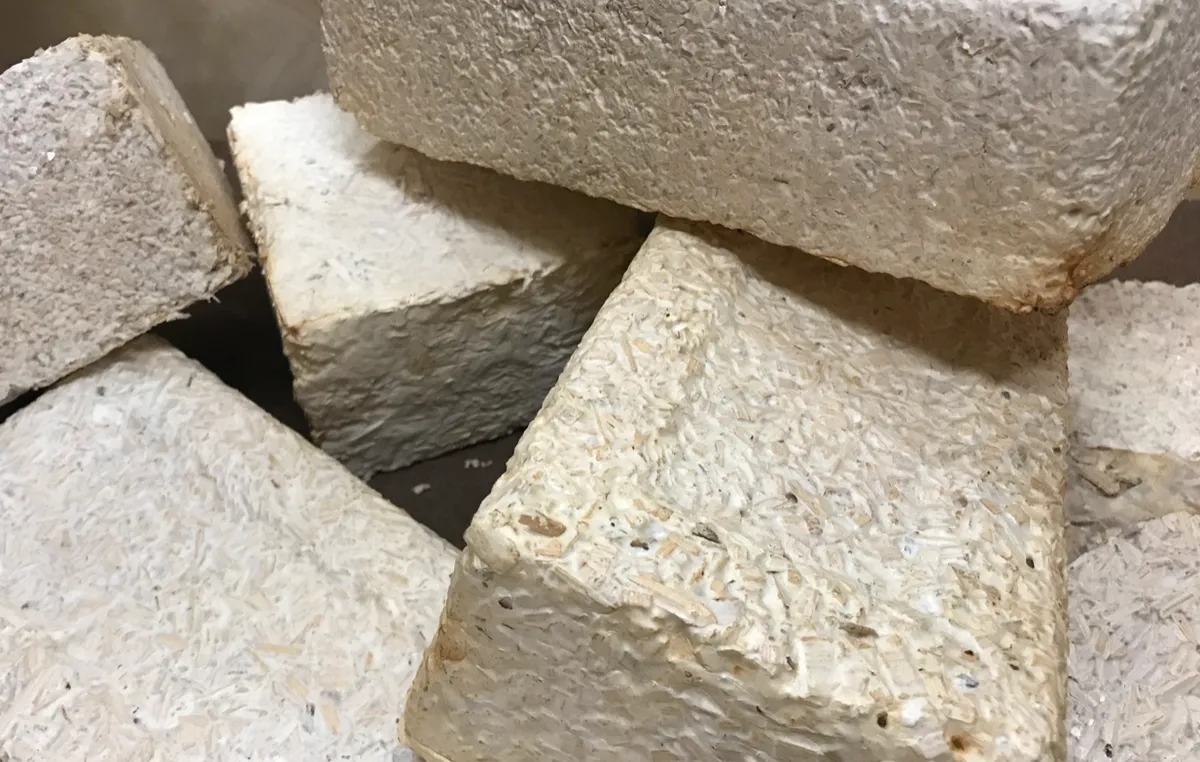NASA is looking at ways to successfully build habitats on the Moon and Mars, including growing them out of mushrooms. Could such a technique be possible? Could future lunar and Martian explorers be living, working and sleeping in structures grown from fungi?
We spoke to astrobiologist Dr Lynn J Rothschild of NASA’s Ames Research Center to find out more about myco architecture.
Read our guide to find out what the night sky looks like from Mars.

What are the major challenges of setting up a base on the Moon or Mars?
The two major challenges are adjusting to different gravity regimes and radiation. The Moon is close by so it takes a short time to get there. When you land it’s a sixth of Earth’s gravity, and there’s no atmosphere so the radiation’s harsh.
Mars is a longer trip: six months to get there, a year and a half to get planetary alignment, then six months back. The Martian atmosphere provides a bit of protection and the gravity is a third of Earth’s.
Then you need a home. You have to keep the atmospheric pressure up inside because you want to be able to breathe and not be in closed mobile spacesuits all the time.
What has your research on building on the Moon or Mars revealed?
In our research proposal to NASA I said a turtle brings its house with it but has to spend a lot of energy lugging around its shell – that’s like bringing a pre-made habitat from Earth.
There are NASA scientists working on designing habitats you can make with surface material, but we suggest another faster and low-equipment approach, which is using fungi to build a house.
When you eat a mushroom you are eating the fruiting body of a filamentous fungus. The real body is underground and consists of a network of fine hairs called mycelia.
It’s already been discovered that if you build a shape, put some fungal food in and inoculate with mycelia, they will grow to fill the structure.
With this you can build a continuous structure: go around corners, make joints and make huge boards. Our idea is to use that approach to build off-Earth habitats.
How do you build a space habitat from fungi?
We would start with a double-bag, like a plastic bag one inside the other. In the middle part you have a very lightweight, collapsible scaffold that you’ve laced with dried fungal mycelia, and a few small containers with water.
It would fold up and when you get to your destination you just add water and the structure inflates and the fungi grow to fill the scaffold – you’ve got your habitat.
The double-bag keeps the pressure and vapour inside to prevent contaminating the planet and functions as a built-in barrier so you can ramp up the oxygen level inside.

How would mushroom houses on Mars work for a mission?
For a major habitat on Mars, I would strongly urge NASA to have a precursor mission to set things up. When you go on holiday, you don’t expect to arrive and then wait for a hotel to be built.
I’d love to have it so this thing is able erect itself. Basically, you release water inside the bag and the fungus starts growing.
What makes fungi a better building material than other options?
You could turn regolith, surface material, into concrete, but that will take a lot of heavy-duty equipment. It might be useful to have our habitat in place and then build some regolith, heavy-duty material around it.
Another idea was a 3D-printed ice house, which was an interesting idea, but there are issues including cracking and melting, and water is not in infinite supply.
The obvious option is to just bring the whole thing with you, but these structures would be of substantial volume and incredibly high mass, so we would be spending an enormous amount of energy to get them to Mars.
How long would it take to grow a habitat from fungi?
Around a month. With anything biological the growth rate depends on environmental conditions, but by using synthetic biology we may be able to fine-tune this.
One strain I chose to work on is full of lipids, or fat, which could provide more radiation protection. You could play with that using synthetic biology techniques.
There’s interest in engineering fungi with higher levels of pigments like melanin for protecting from UV radiation.
How far away is the reality of us having off-Earth mushroom homes?
Honestly, that’s as much a political question as a scientific one. NASA has been instructed to have two humans on the Moon by 2024, in what’s called the Artemis programme. Whether we will meet those deadlines is above my pay grade.
Read Dr Rothschild's full report on myco-architecture by accessing the PDF
Dr Lynn J Rothschild is an astrobiologist and synthetic biologist at NASA’s Ames Research Center. This interview originally appeared in the August 2020 issue of BBC Sky at Night Magazine.
